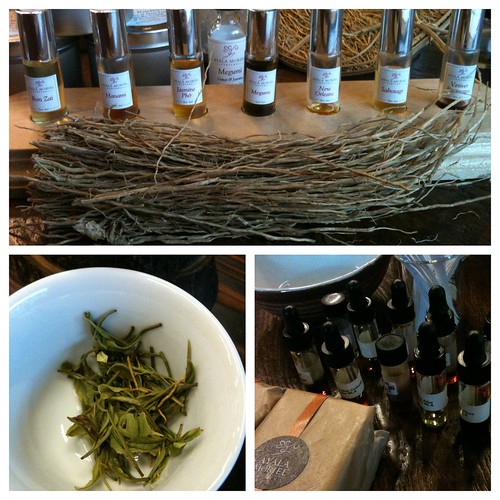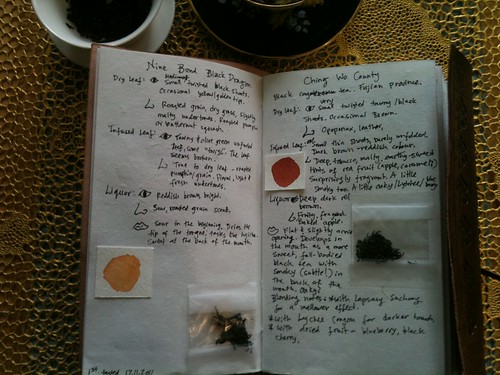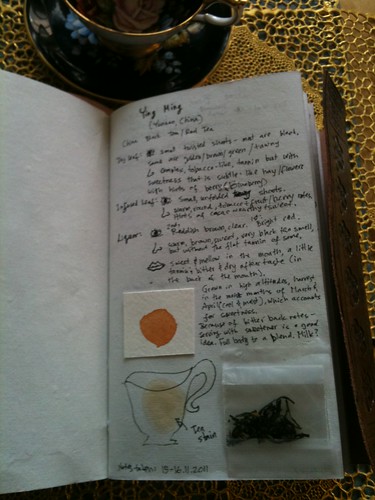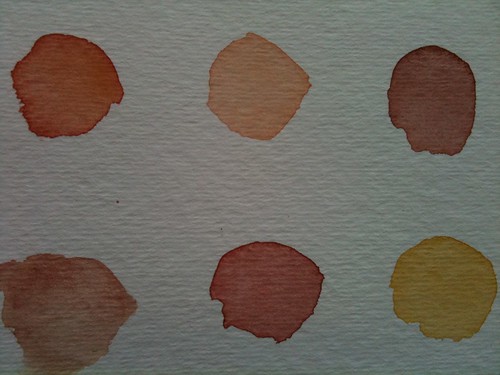Vetiver Salon at O5
The best part of Monday this week was spent at O5 tea bar, where we conducted a Vetiver Salon.
I brought all my vetiver oils and essences - 10 altogether, and from 7 different locales:
India (Vetiver essential oil, CO2, ruh khus, and co-distillation with mitti attar); and vetiver essential oils from South Africa, Surinam, Sri Lanka, Haiti, Bourbon and Indonesia.
Vetiver is used in many of my perfumes, but I brought 7 to create a diverse little collection that features vetiver in a prominent enough manner: Bon Zai, Hanami, Jasmine Pho, Megumi, New Orleans, Sabotage and Vetiver Racinettes and some of my OOAK vetiver perfumes: Vetiver Blanc, Wilde Vetyver, Vetiver Noir and Vetiver Rouge. And it goes without saying that there were some soap and candles involved...
And I also brought the dried roots, so that we can brew some warm vetiver infused tea. In the picture you can see the Anji Bai Cha - a Korean tea that is somewhere in between green and white. It brought out the nutty, sweet warmth of vetiver. We brewed it with another white tea - silver needles from China - to produce a more cool, clean, slightly grassy tasting liquor that would probably taste even better chilled in the summer. And our last experiment - vetiver roots with green pu-erh, which worked quite harmoniously, tasting fresh and not nearly as dirty-like and earthy as black pu-erh teas tend to be.
Hopefully this will be the beginning of semi-regular perfume and salons that I will be co-hosting at O5.
I brought all my vetiver oils and essences - 10 altogether, and from 7 different locales:
India (Vetiver essential oil, CO2, ruh khus, and co-distillation with mitti attar); and vetiver essential oils from South Africa, Surinam, Sri Lanka, Haiti, Bourbon and Indonesia.
Vetiver is used in many of my perfumes, but I brought 7 to create a diverse little collection that features vetiver in a prominent enough manner: Bon Zai, Hanami, Jasmine Pho, Megumi, New Orleans, Sabotage and Vetiver Racinettes and some of my OOAK vetiver perfumes: Vetiver Blanc, Wilde Vetyver, Vetiver Noir and Vetiver Rouge. And it goes without saying that there were some soap and candles involved...
And I also brought the dried roots, so that we can brew some warm vetiver infused tea. In the picture you can see the Anji Bai Cha - a Korean tea that is somewhere in between green and white. It brought out the nutty, sweet warmth of vetiver. We brewed it with another white tea - silver needles from China - to produce a more cool, clean, slightly grassy tasting liquor that would probably taste even better chilled in the summer. And our last experiment - vetiver roots with green pu-erh, which worked quite harmoniously, tasting fresh and not nearly as dirty-like and earthy as black pu-erh teas tend to be.
Hopefully this will be the beginning of semi-regular perfume and salons that I will be co-hosting at O5.





